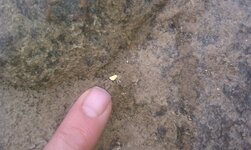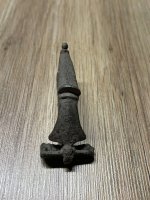bill-costa rica
Sr. Member
Feb072014
 The WealthCycles Staff
The WealthCycles Staff
As California and other Western States face what is shaping up to be the worst drought in 500 years, some latter-day prospectors see a “golden lining” in the record-low river and stream levels of historic Gold Rush country. But entertaining as it may be to try one’s luck at panning for gold like the prospectors of old, gold mining as a business and as an investment is still fraught with risk.
With the spot price of gold at better than $1,265 per ounce, the prospect of finding a sizeable nugget, or even a handful of small ones, for the price of a few hours spent sifting mud in the beautiful Sierra foothills, has its appeal. Northern California and other parts of the Western U.S. have long been a tourist destination, exuding today the same romantic aura of striking it rich the old-fashioned way that it did in the mid-1800s, when tens of thousands of would-be miners descended on the region, most ultimately leaving broke and defeated.
California’s Columbia State Historic Park features restored streets and buildings of Gold Rush mining town Columbia, complete with working blacksmith shop, stage coaches and gold panning. In addition to the historic old mining-town structures, Empire Mine State Historic Park, site of California’s largest, oldest and richest gold mine, also offers access to367 miles of abandoned and flooded shafts and tunnels.
Now the devastating drought that has created a state of emergency for municipal water districts and California’s rich agriculture industry has left the numerous waterways of Gold Country at just a fraction of normal levels. What remains on the muddy banks is the silty residue that has washed downstream from decades of mountain snowmelt, including tailings from the numerous mines and claims that once dotted the area. Sometimes, if one is lucky, that residue contains tiny bits of gold.
The Sacramento Bee and Associated Press recently reported on the boon to area businesses that sell crude mining gear to modern-day gold mining hobbyists and dreamers:
[Truck driver Michael] Albin, [trying his luck along the Bear River in Colfax, California,] has spent about $100 on prospecting equipment, including buckets and a sifter, and he plans to buy a sluice box for $1,000 for summer, when water levels drop even more. The boxes can process more material than a pan.
Spending like that has been a boon for businesses.
“A lot more people are curious,” said Heather Willis, co-owner of Pioneer Mining Supplies in Auburn. Business was up by 10 percent, she said.
A journal article on traditional gold mining techniques from Sierra College describes the most basic method, panning:
The basic procedure was to place some gold-bearing materials, such as river gravel, into a shallow pan, add some water, and then carefully swirl the mixture around so the water and light material spilled over the side. If all went well, the heavier gold nuggets or gold dust would settle to the bottom of the pan.
Gold panning techniques are centuries old, but Isaac Humphrey is credited with introducing gold panning at Coloma in 1848. However, the Mexicans may have beaten Humphrey to the punch as they also had developed the skills in their own country, using a flat dish called a batea. Gold panning was slow even for the most skillful miner. On a good day, one miner could wash about 50 pans in the usual 12-hour workday and obtain a small amount of gold dust.
The invention of the sluice, for which Albin was apparently willing to pay $1,000, improved productivity:
Sluice boxes were extended versions of the Long Tom. A number of sluice boxes were frequently connected into a long line, and large crews of miners were utilized. Ground sluicing was a variant of this practice. Rivers would be diverted into ditches and would soften the gold-bearing dirt and rock. The miners would loosen the dirt and rocks with picks and allow water and gravity to transport the material down to a sluice box. As with the Long Tom, gold was finally removed from the sluice boxes by panning.
Many visitors to the area are combining family vacations or weekend daytrips with a little recreational gold panning, often with the whole family in tow. Even if no gold is harvested, a great day spent out of doors along scenic rivers can be its own reward.
The gold mining industry has made resurgence in California in recent years, as rising gold prices began to overtake the high cost of production. As WealthCycles reported in spring 2013, big mining companies began investigating the prospects of reopening long-closed gold mines, weighing the potential yields against the cost of restoring aging infrastructure and complying with California’s steep environmental regulations.
Often-onerous regulations, high overhead costs, political instability, and the long lead times required to reach full production are factors that have made mining a volatile investment. In this video, Mike Maloney explains his view of mining as an investment. In a nutshell, mining stocks are not a bad investment at a time when prospects for gold are rising, but owning physical gold is better.
“The mining stocks introduce risk into something [physical gold and silver] that is a sure thing, and on the average will outperform the mining stocks anyway,” Mike says. “When you have a mining stock, you can have a mine collapse, the EPA can shut it down, there can be a strike—there’s all sorts of risks that you introduce.
As Mike continues, if you do decide to invest in miners, be sure to do your own research and find expert advice you can trust. For silver mine stocks, Mike recommends David Morgan at silver-investor.com; for gold, Doug Casey or John Doody.
Meantime if you decide to take a side trip to Gold Country while the rivers and streams are running low, who can blame you? You’re likely to have a lot of fun, and who knows? You just might get lucky.

As California and other Western States face what is shaping up to be the worst drought in 500 years, some latter-day prospectors see a “golden lining” in the record-low river and stream levels of historic Gold Rush country. But entertaining as it may be to try one’s luck at panning for gold like the prospectors of old, gold mining as a business and as an investment is still fraught with risk.
With the spot price of gold at better than $1,265 per ounce, the prospect of finding a sizeable nugget, or even a handful of small ones, for the price of a few hours spent sifting mud in the beautiful Sierra foothills, has its appeal. Northern California and other parts of the Western U.S. have long been a tourist destination, exuding today the same romantic aura of striking it rich the old-fashioned way that it did in the mid-1800s, when tens of thousands of would-be miners descended on the region, most ultimately leaving broke and defeated.
California’s Columbia State Historic Park features restored streets and buildings of Gold Rush mining town Columbia, complete with working blacksmith shop, stage coaches and gold panning. In addition to the historic old mining-town structures, Empire Mine State Historic Park, site of California’s largest, oldest and richest gold mine, also offers access to367 miles of abandoned and flooded shafts and tunnels.
Now the devastating drought that has created a state of emergency for municipal water districts and California’s rich agriculture industry has left the numerous waterways of Gold Country at just a fraction of normal levels. What remains on the muddy banks is the silty residue that has washed downstream from decades of mountain snowmelt, including tailings from the numerous mines and claims that once dotted the area. Sometimes, if one is lucky, that residue contains tiny bits of gold.
The Sacramento Bee and Associated Press recently reported on the boon to area businesses that sell crude mining gear to modern-day gold mining hobbyists and dreamers:
[Truck driver Michael] Albin, [trying his luck along the Bear River in Colfax, California,] has spent about $100 on prospecting equipment, including buckets and a sifter, and he plans to buy a sluice box for $1,000 for summer, when water levels drop even more. The boxes can process more material than a pan.
Spending like that has been a boon for businesses.
“A lot more people are curious,” said Heather Willis, co-owner of Pioneer Mining Supplies in Auburn. Business was up by 10 percent, she said.
A journal article on traditional gold mining techniques from Sierra College describes the most basic method, panning:
The basic procedure was to place some gold-bearing materials, such as river gravel, into a shallow pan, add some water, and then carefully swirl the mixture around so the water and light material spilled over the side. If all went well, the heavier gold nuggets or gold dust would settle to the bottom of the pan.
Gold panning techniques are centuries old, but Isaac Humphrey is credited with introducing gold panning at Coloma in 1848. However, the Mexicans may have beaten Humphrey to the punch as they also had developed the skills in their own country, using a flat dish called a batea. Gold panning was slow even for the most skillful miner. On a good day, one miner could wash about 50 pans in the usual 12-hour workday and obtain a small amount of gold dust.
The invention of the sluice, for which Albin was apparently willing to pay $1,000, improved productivity:
Sluice boxes were extended versions of the Long Tom. A number of sluice boxes were frequently connected into a long line, and large crews of miners were utilized. Ground sluicing was a variant of this practice. Rivers would be diverted into ditches and would soften the gold-bearing dirt and rock. The miners would loosen the dirt and rocks with picks and allow water and gravity to transport the material down to a sluice box. As with the Long Tom, gold was finally removed from the sluice boxes by panning.
Many visitors to the area are combining family vacations or weekend daytrips with a little recreational gold panning, often with the whole family in tow. Even if no gold is harvested, a great day spent out of doors along scenic rivers can be its own reward.
The gold mining industry has made resurgence in California in recent years, as rising gold prices began to overtake the high cost of production. As WealthCycles reported in spring 2013, big mining companies began investigating the prospects of reopening long-closed gold mines, weighing the potential yields against the cost of restoring aging infrastructure and complying with California’s steep environmental regulations.
Often-onerous regulations, high overhead costs, political instability, and the long lead times required to reach full production are factors that have made mining a volatile investment. In this video, Mike Maloney explains his view of mining as an investment. In a nutshell, mining stocks are not a bad investment at a time when prospects for gold are rising, but owning physical gold is better.
“The mining stocks introduce risk into something [physical gold and silver] that is a sure thing, and on the average will outperform the mining stocks anyway,” Mike says. “When you have a mining stock, you can have a mine collapse, the EPA can shut it down, there can be a strike—there’s all sorts of risks that you introduce.
As Mike continues, if you do decide to invest in miners, be sure to do your own research and find expert advice you can trust. For silver mine stocks, Mike recommends David Morgan at silver-investor.com; for gold, Doug Casey or John Doody.
Meantime if you decide to take a side trip to Gold Country while the rivers and streams are running low, who can blame you? You’re likely to have a lot of fun, and who knows? You just might get lucky.
Upvote
0






